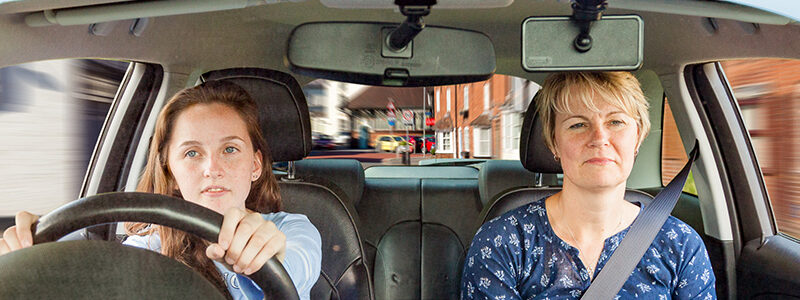Basics (skills 1 to 4)

1. Legal responsibilities
As a driver, it’s your responsibility to know how the law relates to both yourself and your vehicle. Make sure that you’re up-to-date with the rules and regulations.
You should understand how the following affects your driving:
- health
- eyesight
- drink
- drugs
- tiredness
- mobile phones
You must be able to check that the car you’re driving is:
- taxed and has an MOT (if it needs one)
- insured
- safe to drive (roadworthy)
2. Safety checks
It’s important that your car be in good working order before you start the engine. You should be aware of what to check, how to do it and how often to do it.
Think FLOWER to remember these checks:
- fuel – whether you have enough fuel for the journey and, if necessary, planning where to refuel the car
- lights – how to check all lights are clean and working
- oil – where and how to check the levels of engine oil and brake fluid
- water, screenwash and coolant – where they are and how to check them
- electrics – how to check that the battery and charging system, indicators, horn and other warning devices are working properly
- rubber – the correct tyre pressure, how to measure it and how to check tread depth and tyre condition
You should always check that the brakes and steering are working before you start to drive.
3. Cockpit checks
These checks may be simple, but they’re essential. The car you’re using needs to be comfortable and ready for you to drive before you start the engine.
You should always check:
- all doors are closed and the parking brake is on
- your seat is in the right position, and you can reach the foot controls comfortably
- your head restraint is in the right place
- the steering wheel is adjusted so you can use it easily
- your seatbelt is fastened and comfortable
- all mirrors are correctly adjusted
- whether you’ll need to refuel the car
- the parking brake is on and the gear lever is in neutral (or in P or N in an automatic car)
You should know:
- the right order to carry out the cockpit checks – always adjust your seat before checking the mirrors
- the different ways to adjust your seat to give you the best driving position
- how to adjust the mirrors, including adjusting the interior mirror at night so you’re not dazzled by the vehicle behind them
4. Security
This covers not only the security of your vehicle but also its contents and your personal security. You need to be aware of the ways that you can reduce the risks. This includes:
- staying alert at all times
- letting someone know where you’re going and when you expect to arrive or return
- keeping important or valuable items locked away from view while you’re in the car
- choosing a secure place to park and leave the car, especially at night
- fitting additional security measures, such as a steering wheel lock and immobiliser
Learn more about these skills
Previous page:
Next page:
Not feeling completely prepared?
Only take your driving test if you’re feeling completely prepared.
You can move your driving test back if you’re not feeling quite ready yet.
It’s free to change your appointment time, as long as you do it at least 3 full working days (Mondays to Saturdays) before your test.
